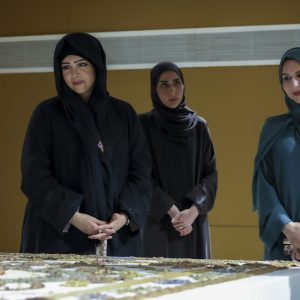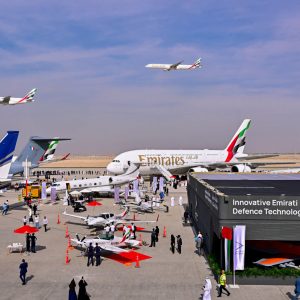The Hassyan Power Plant in the United Arab Emirates (UAE) is a major project shaping the future of energy in the country. Originally designed as a coal-fired power station, it has now fully transitioned to natural gas, making it a significant step toward cleaner energy. This move aligns with the UAE’s sustainability goals and its ambition to reduce carbon emissions while ensuring energy security.
A Shift Toward Cleaner Energy
Hassyan was initially planned as a coal power plant to diversify the UAE’s energy sources. However, in 2022, the UAE government decided to switch its fuel source to natural gas. This decision was driven by the country’s commitment to reducing its carbon footprint and achieving net-zero emissions by 2050. Natural gas is considered a much cleaner alternative to coal, producing significantly lower carbon dioxide emissions and reducing air pollution.
The plant, located in Dubai, plays a critical role in supporting the city’s power supply. It helps meet the growing electricity demand in the region while aligning with the UAE’s broader vision of sustainable development. Dubai has experienced rapid urban and industrial growth over the past few decades, leading to an increased need for stable and efficient energy sources. The shift to natural gas at Hassyan ensures a cleaner, more sustainable approach to meeting these demands.

How Hassyan Power Plant Works

Hassyan Power Plant operates using state-of-the-art technology to ensure efficiency and reliability. The plant has multiple units, each designed to generate electricity through combined cycle technology, which increases energy efficiency and reduces waste. Combined cycle power plants use both gas and steam turbines, allowing them to produce more electricity with less fuel.
The facility is connected to Dubai’s power grid, ensuring a stable supply of electricity to homes, businesses, and industries. With a capacity of over 2,400 megawatts (MW), Hassyan plays a crucial role in supporting Dubai’s economic growth and infrastructure development. Additionally, the plant’s design allows for future expansion, ensuring that it can continue to meet the energy needs of Dubai’s growing population and industries.

Supporting UAE’s Energy Security
One of the key reasons behind the development of the Hassyan Power Plant is energy security. The UAE, despite being rich in oil and gas, has been focusing on diversifying its energy mix. The transition to natural gas at Hassyan ensures a more reliable and cleaner energy source while reducing dependence on coal and other high-emission fuels.
The UAE has also been investing heavily in renewable energy sources like solar and nuclear power. Projects such as the Mohammed bin Rashid Al Maktoum Solar Park and the Barakah Nuclear Power Plant complement Hassyan’s role in securing the country’s energy needs. By integrating multiple energy sources, the UAE ensures a balanced and resilient energy infrastructure capable of adapting to future demands.
Moreover, natural gas has become an increasingly preferred energy source due to its reliability and cost-effectiveness. Unlike coal, which requires extensive supply chains and import logistics, natural gas is more readily available and easier to transport. This contributes to energy security by reducing supply chain risks and ensuring uninterrupted power generation.
Environmental and Economic Benefits
The switch from coal to natural gas at Hassyan brings multiple benefits:
- Lower Carbon Emissions: Natural gas emits about 50% less carbon dioxide compared to coal, helping reduce the UAE’s overall greenhouse gas emissions.
- Improved Air Quality: Coal plants release pollutants like sulfur dioxide and particulate matter, which contribute to air pollution. Natural gas burns much cleaner, reducing these harmful emissions.
- Cost Savings: Natural gas power plants are generally more cost-effective to operate in the long run. They require less maintenance and fuel costs compared to coal plants.
- Increased Efficiency: The advanced technology used in Hassyan’s power generation ensures higher efficiency, meaning more electricity is produced using less fuel.
- Energy Transition Leadership: The UAE is positioning itself as a leader in energy transition within the Middle East, setting an example for other nations looking to shift to cleaner energy sources.
The environmental benefits of switching to natural gas also align with global climate change initiatives. As countries worldwide work toward reducing their carbon footprints, the UAE’s decision to transition Hassyan to natural gas underscores its commitment to global environmental responsibility.
A Step Toward a Sustainable Future
The UAE has been actively working on its Energy Strategy 2050, which aims to increase the share of clean energy sources in the country’s total power generation. The transition of the Hassyan Power Plant to natural gas is a significant step in this direction. It reflects the country’s commitment to sustainability while ensuring that economic growth is not compromised.
Dubai’s leadership has also been keen on adopting smart energy solutions. The integration of natural gas with renewable energy sources helps create a balanced energy mix that supports long-term sustainability goals. Additionally, investments in energy storage and grid modernization will further enhance the UAE’s ability to manage energy demand efficiently.
The UAE’s vision for the future includes continued investment in research and development for alternative energy sources. Technologies such as hydrogen fuel and carbon capture are being explored to complement existing energy infrastructure. As Hassyan continues to operate with improved efficiency, it sets the foundation for even more sustainable advancements in the country’s energy sector.
Conclusion
The Hassyan Power Plant’s transformation is a milestone in the UAE’s journey toward a greener and more sustainable future. By shifting from coal to natural gas, the UAE is demonstrating its commitment to reducing carbon emissions and improving air quality. The plant’s role in ensuring energy security and supporting Dubai’s rapid development cannot be understated.
As the country continues to invest in renewable energy, projects like Hassyan will play a crucial role in ensuring a cleaner, more secure energy supply for future generations. The UAE’s leadership in energy transition will not only benefit its own population but also serve as a model for other nations aiming to adopt cleaner and more sustainable energy practices. Through a combination of innovation, investment, and policy support, the UAE is paving the way for a future where economic growth and environmental responsibility go hand in hand.
Also read: Emirates Road UAE: Major Upgrades, Traffic Changes & Future Plans














